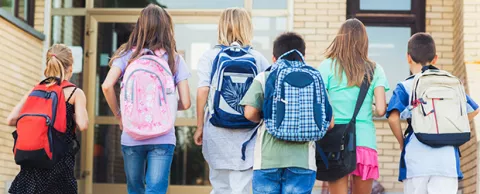
One of the essentials to having a vibrant city is having a vibrant job market. Today, that requires a workforce that truly embraces technology, not just uses it. And cities not only rely on that coveted workforce, they play a role in developing it.
Schools across Australia are already working to prepare the next generation of in-demand workers and they’re starting young — in some cases, elementary school. Council Lead Partner Microsoft recently invited its Showcase Schools to an event where they could swap strategies and success stories to give their children an even bigger advantage.
Below, we’ve compiled three winning ideas below and as you’ll see, these are not expensive ideas. In some cases, it’s simply a matter of making smarter use of the tools you already have. Put them to work in your city to ensure you have a steady supply of job seekers that businesses really want. — Kevin Ebi
1. Have a strategy (in addition to technology)
It’s great to provide your students with tablets or laptops, but that in and of itself is not an education strategy.
“Students should not just be handed technology, but should be taught the right skills and provided with innovative learning environments that will enable them to get the most out of it,” said Travis Smith, Microsoft Australia’s teacher engagement manager.
The conference highlighted the work of Saint Stephen’s College, which provided its teachers with Surface Pro 3s before introducing them to the students. That gave the teachers time to develop effective and individual strategies to help their students get the most from them.
Some of the results: better collaboration with students in high-level classes, a new approach to teaching handwriting and allowing teachers to work hands-on with students during lectures instead of being tethered to the front of the room.
2. Build engagement with online tools
Online resources can help get students engaged in the process of learning even before the first day of classes. Hale School, a boarding school in western Australia, developed resources to allow students to review the curriculum and understand the layout of the school before leaving home. That helped eliminate downtime at the start of the school year as students are getting adjusted to the new environment.
While a boarding school is a special case, of course, there’s no reason this couldn’t work for more traditional schools, getting students excited about the new year before it gets started.
3. Stretch special resources with video conferencing
Big schools in populated areas can more easily make the case for teachers with special areas of expertise. That’s traditionally left smaller, more remote districts out. But video conferencing tools are helping to eliminate that gap.
The Pheonix P-12 Community College in Ballarat uses Skype to provide students through Victoria and even New Zealand with real-time, interactive drama classes. Students are not only getting a specialized education that they wouldn't be able to get otherwise, they're also learning the power of video conferencing from an early age.
Smart cities are made of smart people
Use the Smart People chapter of the Council’s leading Smart Cities Readiness Guide for ideas and strategies to make your constituents smarter and more engaged in your community. Learn the four tips for making citizens active and why traditional governance methods no longer are effective.



